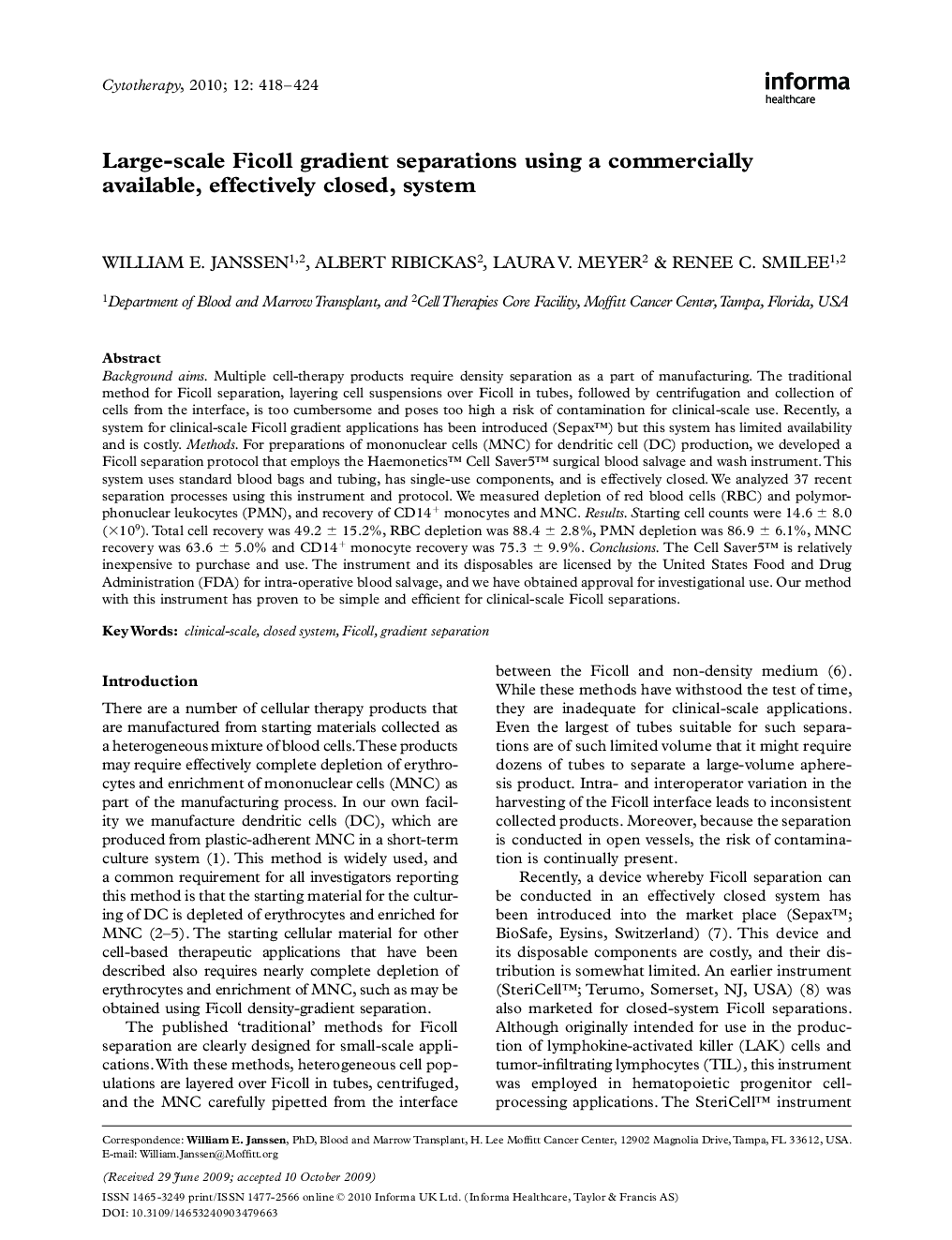| Article ID | Journal | Published Year | Pages | File Type |
|---|---|---|---|---|
| 2172083 | Cytotherapy | 2010 | 7 Pages |
Background aimsMultiple cell-therapy products require density separation as a part of manufacturing. The traditional method for Ficoll separation, layering cell suspensions over Ficoll in tubes, followed by centrifugation and collection of cells from the interface, is too cumbersome and poses too high a risk of contamination for clinical-scale use. Recently, a system for clinical-scale Ficoll gradient applications has been introduced (Sepax™) but this system has limited availability and is costly.MethodsFor preparations of mononuclear cells (MNC) for dendritic cell (DC) production, we developed a Ficoll separation protocol that employs the Haemonetics™ Cell Saver5™ surgical blood salvage and wash instrument. This system uses standard blood bags and tubing, has single-use components, and is effectively closed. We analyzed 37 recent separation processes using this instrument and protocol. We measured depletion of red blood cells (RBC) and polymorphonuclear leukocytes (PMN), and recovery of CD14+ monocytes and MNC.ResultsStarting cell counts were 14.6 ± 8.0 (×109). Total cell recovery was 49.2 ± 15.2%, RBC depletion was 88.4 ± 2.8%, PMN depletion was 86.9 ± 6.1%, MNC recovery was 63.6 ± 5.0% and CD14+ monocyte recovery was 75.3 ± 9.9%.ConclusionsThe Cell Saver5™ is relatively inexpensive to purchase and use. The instrument and its disposables are licensed by the United States Food and Drug Administration (FDA) for intra-operative blood salvage, and we have obtained approval for investigational use. Our method with this instrument has proven to be simple and efficient for clinical-scale Ficoll separations.
